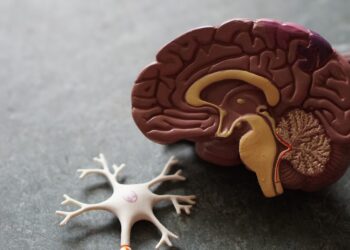It’s a jungle in there. Clinical psychologist Leanne Hall shows us the benefits of neuroplasticity in streamlining the contours of our brain.
Ever feel as though you have become more “set in your ways”?
Chances are, you probably have! But is this a real phenomenon, or just an excuse to avoid something a little uncomfortable?
Well it may comfort you to know that you are not just making excuses, as there is most certainly a neurological reason as to why we become more consolidated and set in our thinking and behaviour as we get older.
As we age, our brains undergo several phases of “neural pruning”. This is much like pruning a garden; you get rid of the plants that look a little sad and lifeless, making way for the more robust and determined plants to thrive. With regard to our brains, neural pruning allows for particular pathways and networks rarely used to be discarded, in order to make way for other functions that are more useful.
Think of a typical 20 year old growing up in a fast paced technological culture. The pathways and networks consolidated for them, are those used in multitasking and knowing how to access information as opposed to learning how to store loads of relatively useless information (like how to do long division!).
So does this mean that by 30 we are completely set in our ways? Well yes and no. Yes our neural pathways have been pruned and consolidated. However, there is this little thing called neuroplasticity, which ensures that our brains continue to keep working hard for us even after our brains have become fully developed.
Neuroplasticity or Brain Plasticity is the ability of the brain to form new neural pathways or synapses. Not only does this mean that the brain has an in built capacity to overcome certain neurological or psychiatric conditions that used to be considered as permanent, but it also means that we can keep our brain fit and resilient, by making different choices and being mindful of changing the neural pathways that can lead us to the conclusion; “I’m just more set in my ways”.
In fact, we can increase our brain’s neuroplasticity at any time in our lives. By trying a new activity, learning a new skill and interacting with other people, the key is to challenge the brain and push outside it’s comfort zone so that it begins to think in new ways.
So, what are the top 3 ways to increase our brain’s resilience and fitness?
1. Use your whole brain – rather than relying on only one side. More traditional methods of learning focus on the left side of the brain (think of how you were taught at school, logical reasoning, etc.), while the right side of the brain is more focused on thinking holistically, being creative, recognizing patterns and interpreting emotions. For example, instead of using a rational, left-brain solution to the next problem you encounter, try using brainstorming techniques or random picture association to encourage ideas to surface from the right side of the brain. In addition, using music and movement also stimulates the right side of the brain.
2. Meditate more. Mediation, or more specifically mindfulness meditation increases the brain’s ability to focus. Surprisingly, by being still and focusing attention, the brain actually sucks in information, and creates new pathways, which can enhance over all cognitive functioning including memory. Another big advantage of meditation is that it strengthens our frontal lobes (prefrontal cortex), which is often the first part of the brain to be adversely affected as the brain ages (for example dementia).
3. Harness the power of visualization! Ask any elite athlete whether they use visualization techniques in their training and I bet they tell you YES! Pairing mental images with thoughts is incredibly powerful. It prepares you for performance, and increases cognitive performance in a number of ways. Not only does it increase motor control, it enhances memory, as well as perception and planning. By visualizing yourself achieving a goal, you will also most certainly increase your self-confidence. You can also give this technique a power boost by combining it with meditation or an affirmation (e.g. “I am courageous; I am strong”).
Finally, a word about exercise. Keeping yourself physically fit by getting a moderate amount of exercise does wonders for your brain also. Not only does exercise improve circulation and reduce stress, it improves blood flow and oxygen to the brain. In fact, even just walking for 30-45 minutes will aid neuroplasticity. What’s more, by being mindful and focusing your attention while you are on you walk will add an extra boost of neuroplasticity power!
So lace up your runners and start meditating!




















